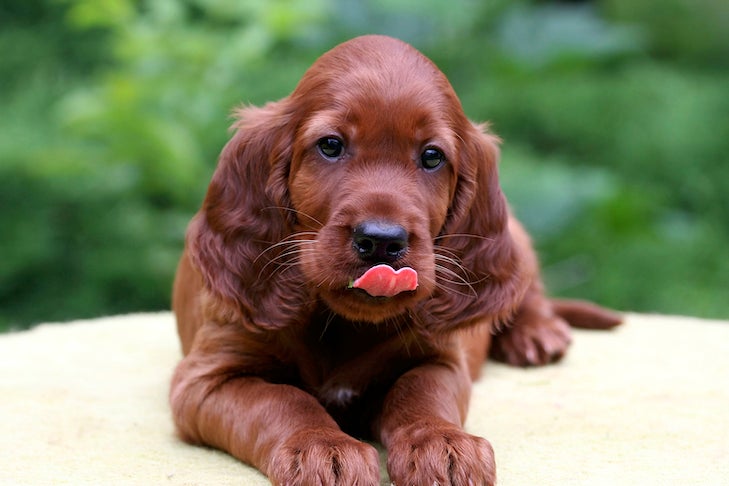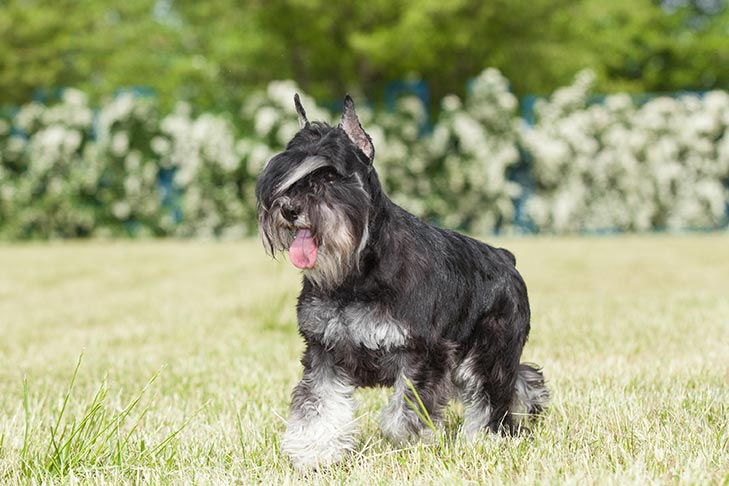
- miniature schnauzer
- dachshund
- cocker spaniel
- most popular
- labrador retriever
- beagle
- german shepherd dog
- poodle
- most popular breeds
- irish setter
- collie
- doberman pinscher
Poodles retain their position as the country’s top dog for a second decade and have regularly remained in the top ten since. The Doberman Pinscher made its first appearance in the top ten in the 1970s as the number-three breed. The breed would remain in the top ten for the 1980s as well.
The Miniature Schnauzer entered the top ten in the 1960s as number eight and uniquely sustained that ranking for three consecutive decades. The 1970s also marked the first appearance of the Labrador Retriever in the country’s top ten.
1. Poodle

The Poodle is supposed to have originated in Germany. However, for years, it has been regarded as the national dog of France, where it was commonly used as a retriever. The English word “poodle” comes from the German “pudel” or “pudelin,” meaning “to splash in the water.”
2. German Shepherd Dog


Derived from the old breeds of herding and farm dogs, the German Shepherd Dog has been subject to intensive development. For centuries, the breed has been considered a loyal servant and companion. The GSD is also distinguished for its courage and ability to assimilate and retain training for such special services as police work and as a guide dog for the blind.
3. Doberman Pinscher

The breed originated around 1900 in Germany, taking its name from Louis Dobermann of Apolda, a tax collector, who desired a medium-sized dog to perform as a guard dog, as well as a companion. The Doberman Pinscher emerges from old shorthaired shepherd-dog stock combined with Rottweiler, Black and Tan Terrier, and Smooth-haired German Pinscher.
4. Beagle (13 and 15 inches)

The actual origin of the Beagle seems to be obscure because of the absence of reliable documentation on the earliest days of development. The turning point for American Beagles came in the 1860s when dogs from a well-bred strain in England were imported to inject a beautiful breed type.
5. Dachshund (Longhaired, Smooth, and Wirehaired)

The Dachshund can be found in historical accounts dating back to the 15th, 16th, and 17th centuries, when illustrations reflected badgers being hunted with dogs with elongated bodies, short legs and hound-type ears. Early in the 17th century, the name Dachshund (“badger dog”) became the designation of a breed type with smooth and longhaired varieties. In 1890, wirehairs were added as a third variety.
6. Irish Setter

The Irish Setter first came to popular notice in the 18th century The solid-red Setter first appeared in Ireland in the 19th century, and in 1812, the Earl of Enniskillen declared he would have nothing else in his kennel.
7. Cocker Spaniel (American, All Colors)

The spaniel family is a large one of considerable antiquity. As far back as the 14th century, we have mention of the Spanyell, which came to be divided into water and land spaniels. Further divisions in land spaniels were based on size. “Cockers” were the smaller of the two types. To this day, Cocker Spaniels are the smallest in the Sporting Group.
8. Miniature Schnauzer

This breed is of German origin, said to be recognizable in pictures of the 15th century. Miniature Schnauzers were bred down from their larger cousins, Standard Schnauzers. Aside from the size difference, the two breeds look much alike.
9. Labrador Retriever

Despite their name, Labrador Retrievers originated in Newfoundland, not Labrador. The area was populated with small water dogs, which when bred with Newfoundlands, produced a breed referred to as the St. John’s Water Dog, a prototype of the Lab of today. The pedigrees of the two most influential Labs go back as far as 1878.
10. Collie (Smooth and Rough)

The precise origin of the Collie remains an enigma, but the two varieties, the rough-coated and the smooth-coated, existed long ago in the unwritten history of the herding dogs of Scotland and northern England. Prior to the past two centuries, both varieties were strictly working dogs without written pedigrees.

